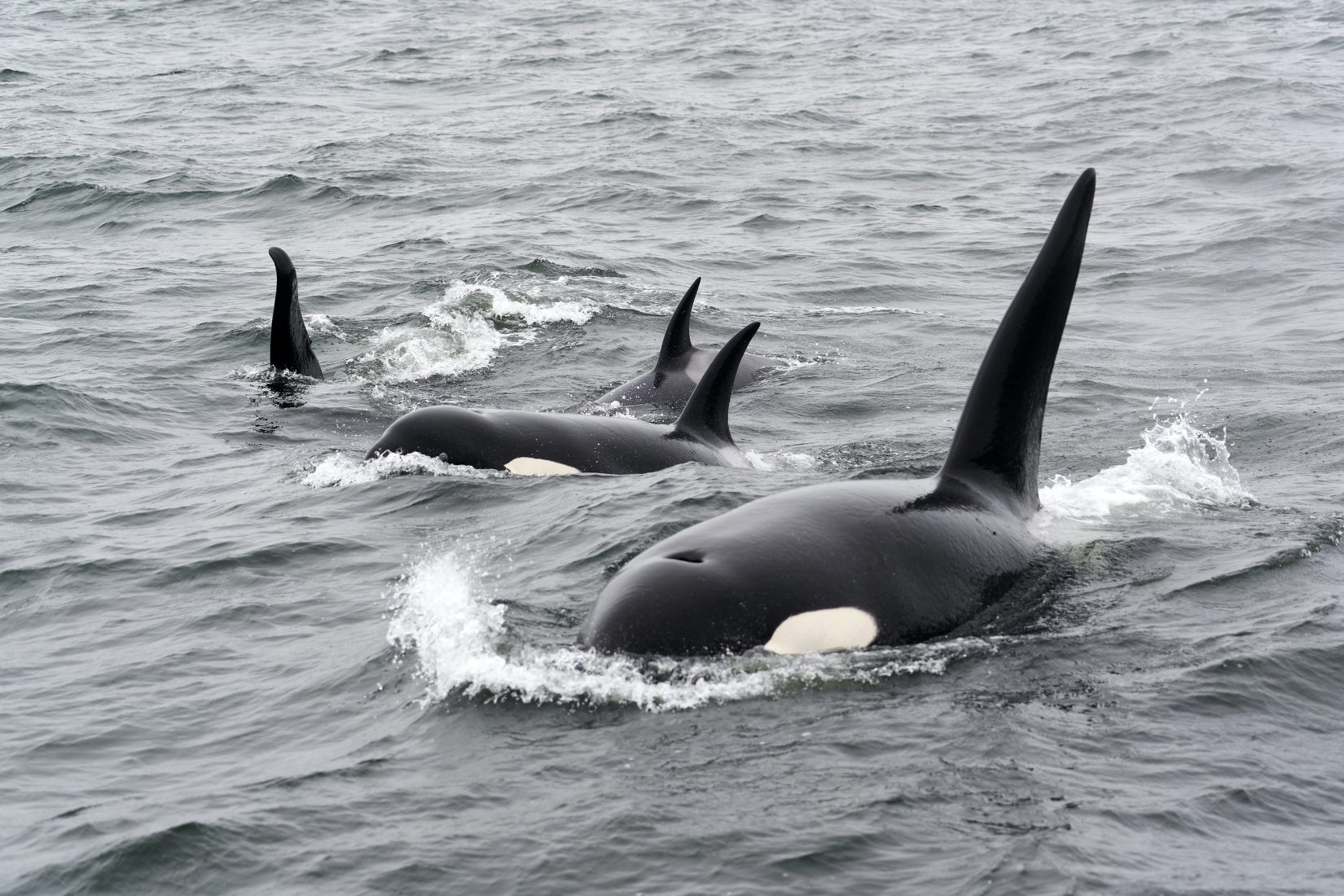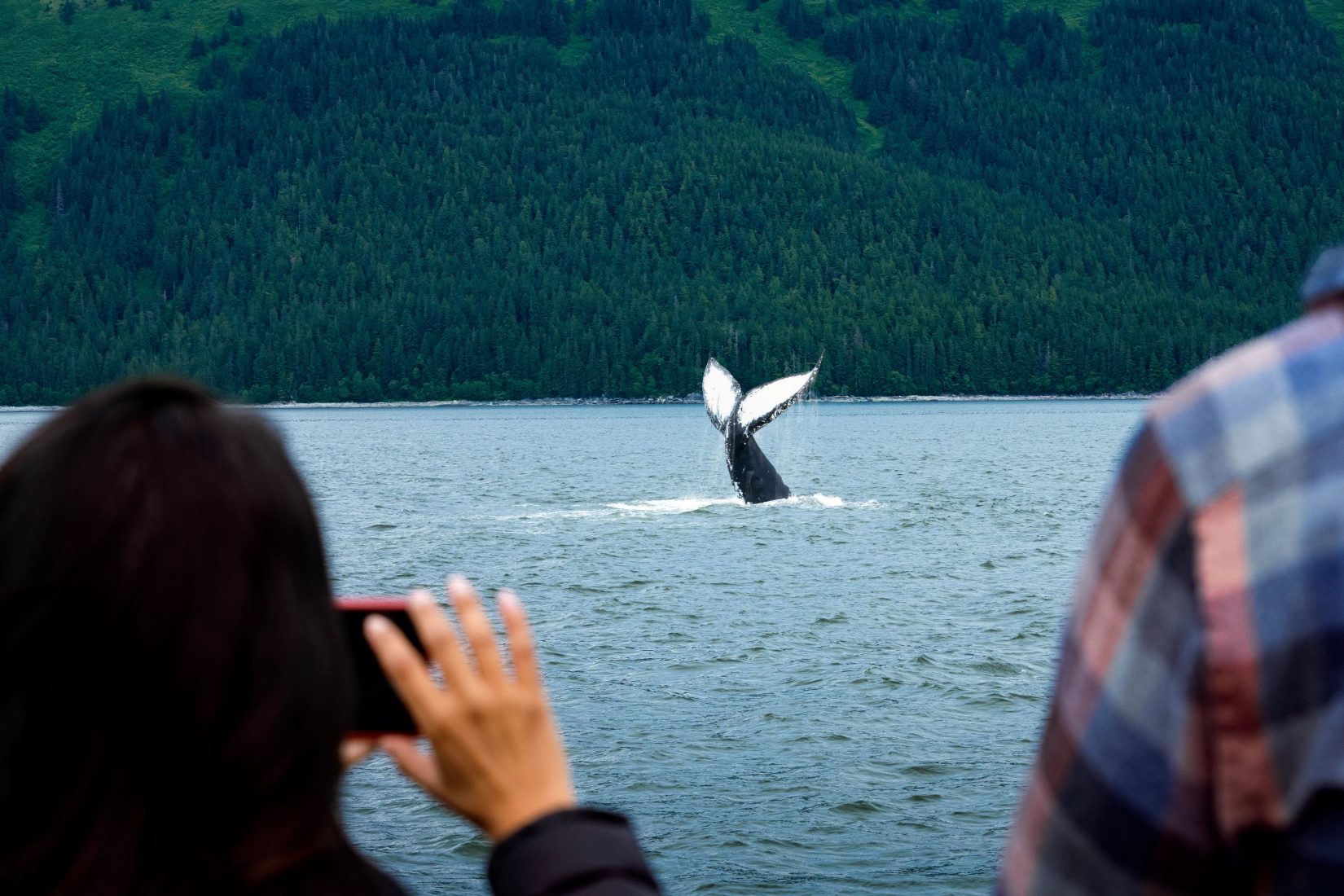There are a handful of places in the world where you can watch the magical moment a whale leaps out of the waves, crashing back into the water just seconds later. The special experience is just one of the reasons why Alaska tops many travel lists. If you want to enjoy whale watching—and make memories on other adventures like dog sledding and exploring ice caves—then look no further than a cruise to Alaska.
Between gorgeous, snowcapped mountains and lush forests full of wildlife, the natural beauty that exists in the Last Frontier is known as both unique and mostly untouched. Experience it all and more with Royal Caribbean. From April to September, you can choose from a variety of seven-night cruises on Brilliance, Ovation, Quantum and Radiance of the Seas that start in cities like Seattle; Vancouver, Canada; and Seward, Alaska.
Now, are you wondering where and when it’s the best time to spot whales in the 49th U.S. state and what other experiences await?
Here’s your guide to whale watching and exploring in Alaska.

Based on whales’ migration patterns, whale-watching season in Alaska is typically between April and September.
Credit: UNSPLASH
What Time of Year Is Best to Go Whale Watching?
From around April to September, whales can be found in many parts of Alaska. They travel thousands of miles between the warmer waters of Hawaii and Mexico in the winter to the Arctic region in the summer because of their migration patterns. One of the reasons why you’ll often see whales tied to local culture is because there are so many of them during this time of year. Dating back thousands of years, whales were a source of food, inspiration for artwork and more for Alaska Natives.
The summer months are the perfect time to cruise to Alaska. Not only will you experience beautiful weather throughout the state, but you’ll have even better chances to these amazing animals in person.
Pro tip: You can extend your vacation in Alaska with a Cruisetour, which includes multiple days of guided experiences. From breaching whales at Kenai Fjords National Park to grazing caribou at Denali National Park, you could get up close and personal with the wildlife and nature.

If you want to see plenty of action in the water, like whales flipping their tails and spraying water everywhere, head to Juneau, Alaska.
Credit: Royal Caribbean
Where Are the Best Places to Spot Them?
There are different locations throughout Alaska. Because the waters of Juneau and Icy Strait Point are rich in shrimp-like krill, aka one of their favorite foods, you could spot whales in large groups there. Resurrection Bay, a fjord located in the heart of Seward, is another great spot to see humpbacks—and even orcas. Since it moves toward both the Gulf of Alaska and Kenai Fjords National Park, you’ve got the ultimate view from the top of your whale-watching boat. You can also go on adventures near Glacier Bay and the Tracy Arm fjord, which are known for sightings throughout the peak season.
Pro tip: Whale watching in Juneau is one of Royal Caribbean’s many GTSC-certified shore excursions, or sustainably operated adventures. Looking for even more marine life while in Alaska? You can sail the Inside Passage on a special fishing tour, where you’ll be able to catch some king crabs, which can reach a leg span of 6 feet!

Orca whales can typically grow to be anywhere between 23 and 27 feet.
Credit: UNSPLASH
What Kinds of Whales Might Show Up?
What makes whale watching in Alaska so exciting is that every trip can lead to very different sightings. Humpback whales are common, especially when about 10,000 of them arrive from Hawaii each year. Up to 60 feet long and weighing in at a maximum of 40 tons, these massive creatures are known for their song-like calls.
You also might see some gray whales, which travel a whopping 11,000 miles round trip between Baja California and the Arctic annually. And if you happen to spot that iconic black-and-white coloring, you’ve crossed paths with an orca, aka the largest member of the dolphin family. While less common, it is also possible to spot beluga whales in the Anchorage area because of all the salmon in the waters.
Pro tip: Wildlife is unpredictable, which can make your chances of spotting whales a tossup. One of the best parts about Alaska? There are unique animals on land and in the skies, too, like bald eagles, caribou, bears and more.

To get an even closer view of the whales, bringing some binoculars or a camera is always a good idea.
Credit: Royal Caribbean
What to Pack for a Whale-Watching Adventure
If you happen to own a pair of binoculars, be sure to pack them for your vacation! Get ready to see the whales from a completely different point of view. A camera is another must-bring item. Whether you have a crystal-clear phone lens or a digital camera, you’ll want to capture all the thrilling memories you’re enjoying on and off your ship.
Pro tip: Royal Caribbean experts recommend packing thin layers that you can easily add or remove because temperatures can fluctuate quickly in Alaska.
Alaska is home to some of the most stunning landscapes in the world, and there’s nothing like observing the wildlife that lives there. Whale watching is just one of the ways to make your cruise a vacation that you will never forget.
If whale watching sounds like, well, a whale of a time, check out the Royal Caribbean cruises you can choose from now.

















